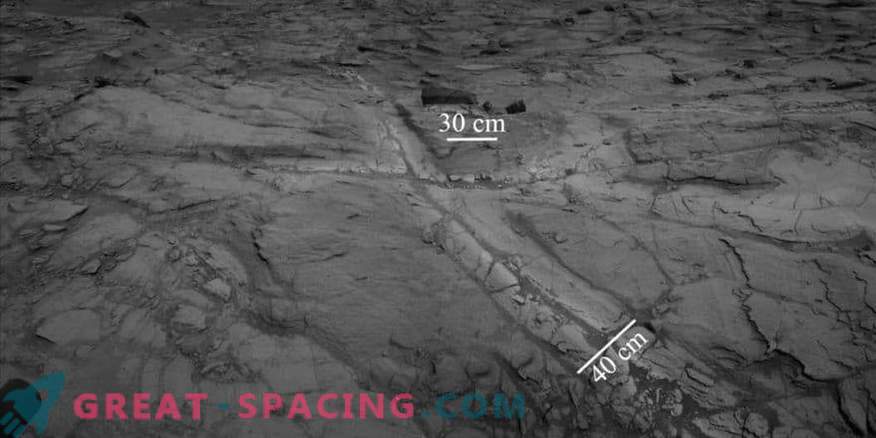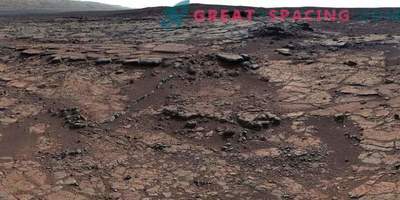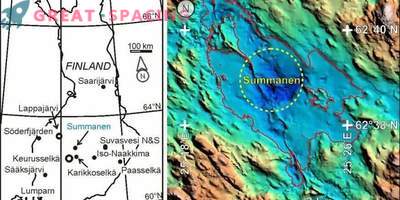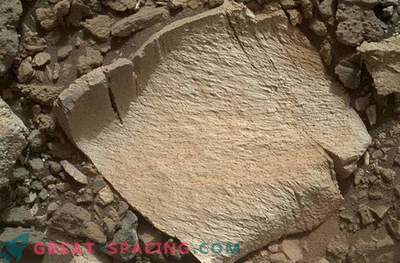
The combined image of Curiosity cameras demonstrates the “halos” of lighter rock around cracks. They contain a high level of silica and hint that water underground has flowed longer than believed.
At the edge of the crater, Gale found lighter rocks surrounding the cracks. Notable because they contain a lot of silicon dioxide - "halos". That is, the liquid lasted much longer.
Silica appears to have moved between primitive sedimentary rocks and younger rocks. The goal of Curiosity is to determine the possibility of having life on the Red Planet in the past. Observations show that there was a lake in the crater of Gale. Perhaps we could even consume such water. But it is still not known how long this situation was able to survive. As a result, the lake dried up, but the groundwater lasted much longer. These data feed the results of another discovery - the Martian forest. This increases the chances that life in the past could have survived underground.
Halo helped test ChemCam (chemical analysis) on a rover. Curiosity traveled more than 16 km and spent 1,700 sols (days on Mars). He managed to climb from the bottom of the crater Gale and get to Mount Aolid. Researchers use ChemCam to study a detailed map of geology.
A large amount of silicon dioxide was found on a height of 30 m near the rocky layer of the remains of an ancient lake. That is, it was simply washed away with water flowing through the cracks. The presence of halos created after the disappearance of the lake may indicate that the water under the ground can still be active.











































